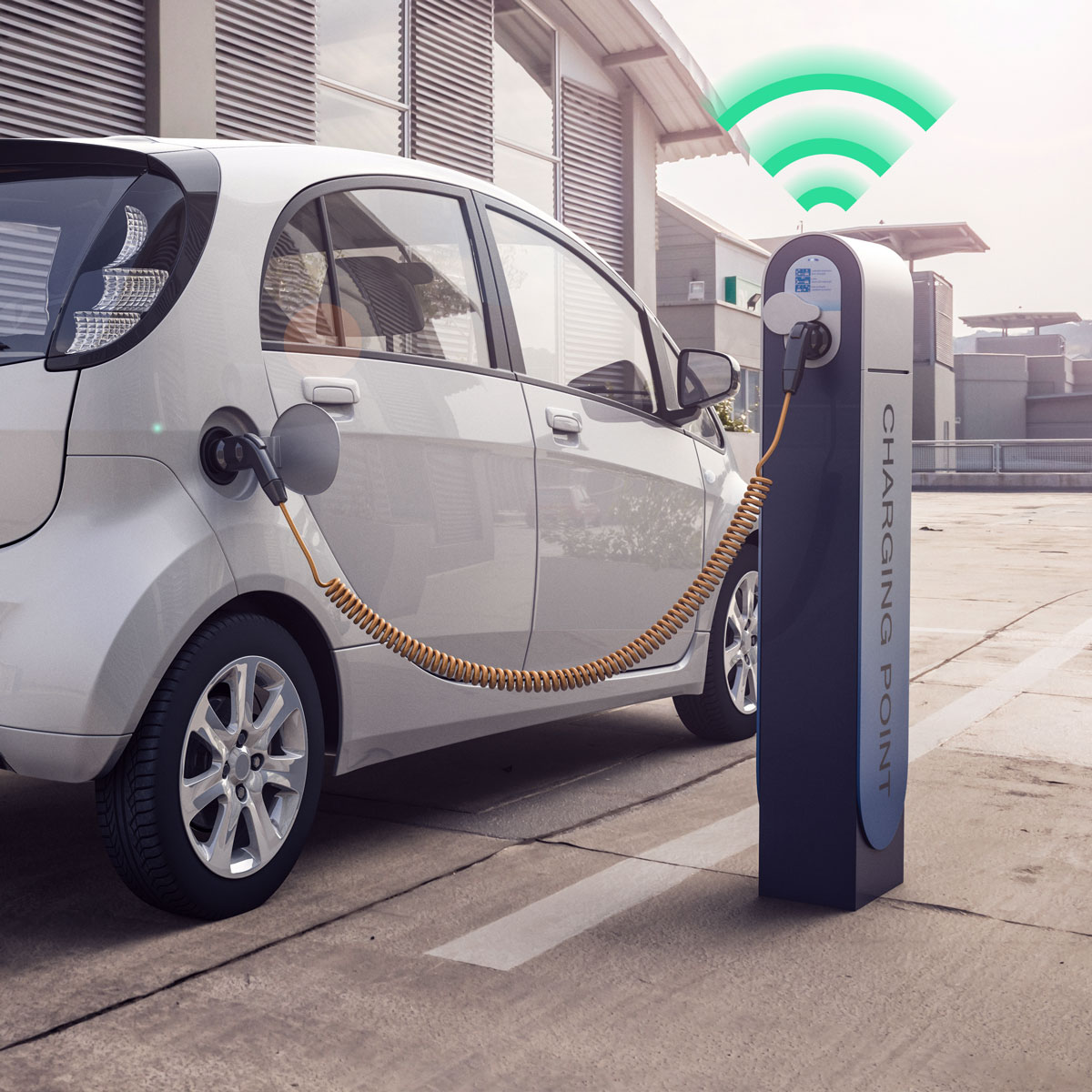The scale of this transformation is clear. According to Grand View Research the global 5G IoT market was valued at USD 7.72 billion in 2024. It is expected to reach USD 89.42 billion by 2030, with a CAGR of 50.3% from 2025 to 2030. For telecom, IoT is not optional. It is a necessity to stay competitive and relevant in a rapidly changing landscape.
What is IoT in Telecom?
IoT stands for the Internet of Things. It is the network of physical devices connected to the internet. These include sensors, machines, vehicles, and appliances. These devices collect and share data, enabling smarter decisions and automated processes. In simple terms, IoT makes everyday objects “smart” by giving them the ability to communicate.
In telecom, IoT plays a central role. Telecom operators provide the connectivity that links billions of devices worldwide. They also supply IoT SIM cards, eSIM and iSIM solutions, and global coverage to ensure seamless connections across regions. Without telecom networks, IoT cannot function. This makes IoT in telecom not just an add-on service but a key driver of industry growth and innovation.
Current State of IoT Adoption in Telecom
Telecom providers are already deeply invested in IoT. Millions of IoT-enabled devices are connected through their networks. Industries such as healthcare, logistics, and automotive rely on telecom to keep their systems online and secure.
Telecom platforms help enterprises manage SIMs automatically. They also monitor devices and analyse data in real time. For example, tools like the Com4 IoT API help companies manage connectivity at scale.
With the rollout of 5G and new technologies like fixed wireless access, IoT adoption is accelerating. Telecom providers are moving from being just carriers to becoming enablers of smart ecosystems.
Top 10 Key Applications in the Telecom Industry
IoT is reshaping how telecom providers operate and deliver value. It is not limited to network monitoring. It touches customer service, operations, logistics, and even revenue models. Below are ten key applications where IoT is making a real impact in telecom.
- Network Infrastructure Monitoring: Sensors track telecom towers, base stations, and data centres. Operators detect faults early and schedule maintenance before outages occur. This reduces downtime and ensures reliability.
- Smart Network Operations: IoT provides real-time insights into bandwidth, traffic, and signal strength. Operators can adjust resources dynamically, improving network efficiency.
- Customer Experience Enhancement: IoT allows personalised plans, real-time troubleshooting, and smart self-service solutions. Customers get faster service and fewer disruptions.
- Asset and Fleet Management: IoT devices track vehicles, equipment, and spare parts. This reduces costs and improves logistics for telecom field operations.
- Energy Management: IoT helps reduce energy use in data centres and telecom towers. Smart energy systems lower operational costs and support sustainability goals.
- Fraud Detection and Security: Connected systems can spot unusual patterns in usage or billing. Telecom operators can detect fraud in real time and protect customers.
- Remote Troubleshooting: IoT devices enable operators to diagnose and fix problems without sending engineers on-site. This saves time and money.
- Service Automation: IoT automates many routine tasks, such as network adjustments or billing updates. This allows staff to focus on more complex work.
- Connected Customer Devices: IoT integrates telecom services with wearables, smart home devices, and cars. This creates new revenue streams and stronger customer engagement.
- Compliance and Reporting: IoT platforms collect data for audits, performance tracking, and regulatory compliance. This reduces manual work and improves accuracy.
10 Benefits of IoT implementation for Telecom Companies
By integrating IoT, telecom companies can cut costs, improve customer experience, and unlock new revenue models. The following benefits highlight why IoT is at the centre of telecom transformation.
- Operational Efficiency: IoT enables predictive maintenance, fault detection, and smart resource allocation. Networks stay online longer with less downtime.
- Cost Reduction: Smart energy systems and automated monitoring cut operating costs in towers, base stations, and data centres.
- Global Reach: With global IoT coverage, operators can deliver seamless connectivity across 190+ countries. Enterprises can manage devices with one partner.
- Revenue Growth: Operators monetize IoT through connectivity packages, APIs, and value-added services. New industries create new income streams.
- Improved Customer Experience: IoT personalizes services and reduces service interruptions. This leads to happier and more loyal customers.
- Innovation and New Business Models: IoT supports connected cars, telemedicine, and smart cities. Telecom becomes a partner in innovation rather than just a utility provider.
- Data-Driven Insight: IoT generates massive amounts of data. Operators use this for better decision-making, product development, and market strategies.
- Enhanced Security: Real-time monitoring detects threats faster. IoT-based security solutions reduce risks for operators and customers.
- Sustainability and Green Operations: IoT reduces power use in networks. It also supports greener solutions like fixed wireless access to replace traditional cable infrastructure.
- Stronger Partnerships: IoT opens opportunities to collaborate with healthcare, automotive, logistics, and manufacturing industries. Telecom companies become central to cross-industry ecosystems.
Challenges and Barriers
Adopting IoT in telecom comes with major opportunities, but it also brings serious challenges. These challenges can be divided into technical and business aspects. Telecom companies must address both if they want IoT projects to succeed.
Technical Challenges
-
Interoperability
Legacy telecom systems often struggle with IoT integration. This makes device compatibility a major challenge. Operators need upgrades and standards to ensure smooth integration. -
Network Congestion
The rapid rise in connected devices increases bandwidth demand. Without smart traffic management, this leads to slower performance and poor service quality. -
Data Security
Every IoT device can become a cyberattack entry point. Operators must use strong encryption and monitoring to protect networks and customer data. -
Scalability
Managing millions of devices across regions is complex. Operators need advanced platforms to scale efficiently and control costs. -
Latency Issues
Critical IoT applications like connected cars need instant responses. High latency can cause failures, making 5G and edge computing essential.
Business Challenges
-
High infrastructure Costs
IoT requires major investment in 5G, edge, and cloud systems. Smaller operators often find it hard to compete with these costs. -
Unclear Monetization Models
Revenue strategies for IoT are still evolving. Operators must move beyond connectivity and explore services like APIs and analytics. -
Regulatory Compliance
Strict data privacy laws increase complexity. Non-compliance can result in heavy penalties and reputational damage. -
Talent Shortage
IoT needs experts in AI, cloud, and cybersecurity. Skilled professionals are scarce, making it hard to scale projects. -
Customer Education
Many enterprises do not fully understand IoT benefits. Telecom companies must educate customers, which slows adoption.
IoT Technologies Enabling Telecom Transformation
IoT relies on a mix of advanced technologies to reach its potential in telecom. These include:
5G and IoT Integration
5G enables ultra-fast, low-latency connections. It supports advanced IoT applications like connected vehicles and smart factories. 5G and satellite technologies like Starlink create hybrid networks. These networks ensure uptime even in remote areas. Operators such as Com4 and Nokia are building global 5G IoT solutions.
Edge Computing
Processing data at the edge reduces delays and improves response times. Telecom operators use edge computing to power critical IoT services like connected healthcare.
AI and Machine Learning
AI and ML analyse IoT data in real time. They predict failures, detect fraud, and forecast demand. This helps operators optimise networks and reduce risks.Cloud Platforms
IoT platforms in the cloud allow easy scaling. Telecom companies use them to host enterprise IoT services and manage millions of devices globally.API-Driven Ecosystems
APIs connect IoT services with enterprise systems. Tools like the Com4 IoT API make integration faster and simpler.
Satellite Connectivity
Global satellite solutions extend IoT reach to remote regions where terrestrial networks cannot reach. This expands market opportunities for telecom.
Future Trends and Market Outlook
The future of IoT in telecom is bright and highly profitable. The demand for real-time connectivity and smart services will only increase.
Telecom operators will play a key role in enabling Industry 4.0, smart cities, and digital healthcare. IoT will transform them into service enablers, innovators, and ecosystem builders. Growth will come from integrating IoT with 5G, AI, and satellite networks.
Market Size and Forecast
- 2024 Market Size: USD 7.72 Billion
- 2030 Projected Market Size: USD 89.42 Billion
- CAGR (2025-2030): 50.3% (Grand View Research).
Key Trends
- Rise of satellite IoT for global coverage.
- Rapid adoption of iSIM for flexible integration.
- Expansion of fixed wireless access for last-mile connectivity.
- Stronger partnerships with industries like logistics, healthcare, and automotive.
IoT is no longer a supporting technology for telecom. It is the foundation of how the industry will grow and compete in the years ahead. By adding IoT to networks, operators improve efficiency and customer experience. They also unlock new sources of revenue. Challenges such as cost, regulation, and security remain, but the long-term benefits are greater. With 5G, edge computing, AI, and satellite connectivity, telecom providers are ready to lead the connected future. Those who embrace IoT now will shape the next era of global communications.
FAQ
How does IoT improve telecom network performance?
IoT tracks networks in real time, predicts failures, and automates traffic management. This improves uptime and service quality.
How can telecom companies monetise IoT beyond internal operations?
What role does 5G play in the future of IoT in telecom?
What are IoT examples in Telecom?
How does IoT help reduce costs for telecom operators?
How does IoT improve customer experience in telecom?
Can telecom companies use IoT for sustainability?
What are the biggest challenges in adopting IoT in telecom?
Challenges include high costs, security risks, and regulatory requirements. Legacy systems also make integration complex.
How important are APIs in IoT for telecom?
What industries benefit most from IoT-enabled telecom services?
Industries like logistics, automotive, healthcare, and manufacturing gain the most. Telecom provides the backbone for their connected systems.







.jpg)

